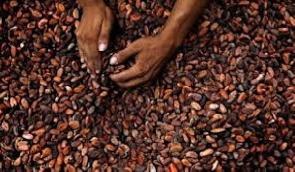Officials of the Ghana Cocoa Board (COCOBOD) have begun inspecting of cocoa farms that are undergoing a pruning exercise in the country.
The process which involves thinning of tree branches and removal of old and dead stems is seen as imperative as it is estimated that cocoa farmers are likely to experience between a 15 percent to 20 percent increase in the production of cocoa beans after the project ends this month.
Besides an increase in yield, the exercise is expected to allow room for new growth of the branches which could potentially deter pest and animal infestation as well as promote the plant’s natural shape and healthy growth.
Already, the Board has supplied about 100,000 pieces of equipment and materials that are being used to undertake the project. They include secateurs, pruners, loppers among others.
Currently, it is estimated that Ghana has more than 2.5 million hectares of cocoa areas of which about 1.45 million hectares are considered to be productive areas.
This Cocobod has targeted 100 percent pruning of cocoa farms implying that all cocoa farmers in the country will, in turn, be beneficiaries of the programme.
Last year, due to some challenges, only 14 percent of cocoa farms across the country were pruned.
Addressing cooperative cocoa farmers during a five-day tour in the Western Region, the Deputy Chief Executive in-charge of Agronomy and Quality Control of COCOBOD, Dr. Emmanuel Agyemang- Dwomoh reiterated the need for cocoa farmers to continuously undertake effective and constant pruning to ensure an increase in yield productivity.
“We have already supplied 100,000 mechanized pruners to assist farmers realize the objective of proper pruning”, he said.
The exercise also serves as a crucial avenue for COCOBOD officials to interact with cocoa farmers on the need to increase production of cocoa beans even at a time the novel Coronavirus pandemic is ravaging all global trading and business activities.
Key Highlights
During the five day tour, COCOBOD officials first inspected some cocoa farms in the Wassa-East District of the Western Region. They include a 22-acre cluster of cocoa farm owned by 70 farmers at Kofi Eshia, the Kwabaa Cocoa Cooperative Farm as well as Anomawobidi Co-operative Farmers
The delegation again continued to the Tikobo No.2 forest in Jomoro District where 380 farmers have cultivated over 500 acres of cocoa plantations.
Importantly, continuous and effective pruning of cocoa farms is expected to prevent a number of diseases including Black Pod Disease among others and the exercise also results in proper ventilation and exposure to sunshine to increase yield.
Click to view details



Business News of Friday, 24 April 2020
Source: goldstreetbusiness.com

















